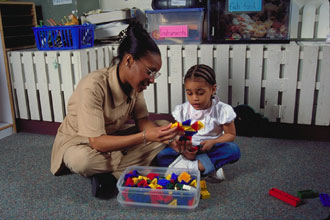 |

Ken Hammond, USDA.
In the United States, one of the most educated
and affluent countries in the world, in 2008, over three-quarters
of a million children were victims of child maltreatment (USDHHS-ACF,
2010). The good news is that child abuse investigations are
up and the rate of victimization is down nationally. During
the time frame 2004 to 2008, the rate of all children in the
US who received a disposition increased from 48.2 per 1,000
children in 2004 to 49.4 per 1,000 children in 2008. The rate
of victimization decreased from 12.0 per 1,000 children in
2004 to 10.3 per 1,000 children in 2008 USDHHS-ACF, 2010).
In calendar year 2009, the Department of
Human Services in the state of Iowa accepted 25,814 reports
for assessment. After completing the assessment of the allegations,
DHS confirmed that abuse occurred in 8,867 (34%) of the assessed
reports. There were 12,442 child victims named in the confirmed
and founded reports. Some children suffered multiple types
of abuse or repeat maltreatment. These results represent a
rate of 15.6 per 1,000 Iowa children abused for 2009 (IDHS,
2010).
The suffering of children continues despite
laws identifying mandatory reporters. In Iowa, all mandatory
reporters are required by law to complete two hours of training
during their first six months of employment and two hours
every five years thereafter. The Iowa Department of Public
Health, Abuse Education Review Panel has approved this course
to meet that requirement.
Note: National statistics are based
on reports from each individual state. However, each state,
through its laws defines child abuse, neglect, maltreatment,
etc. differently. For example, some states use the term "neglect"
which in Iowa is considered "denial of critical care"; some
states specifically identify "medical neglect", while in other
states, "medical neglect" is considered part of "neglect".
Additionally, some authors of the references used in this
course define these terms differently. For the purpose of
this course the terms "abuse and neglect/maltreatment" or
"maltreatment" will be used to identify the entire spectrum
of reportable mistreatment of children. When a specific type
of mistreatment is addressed, it will be identified as such.
Continue to Who Are
the Mandatory Reporters?
|
 |